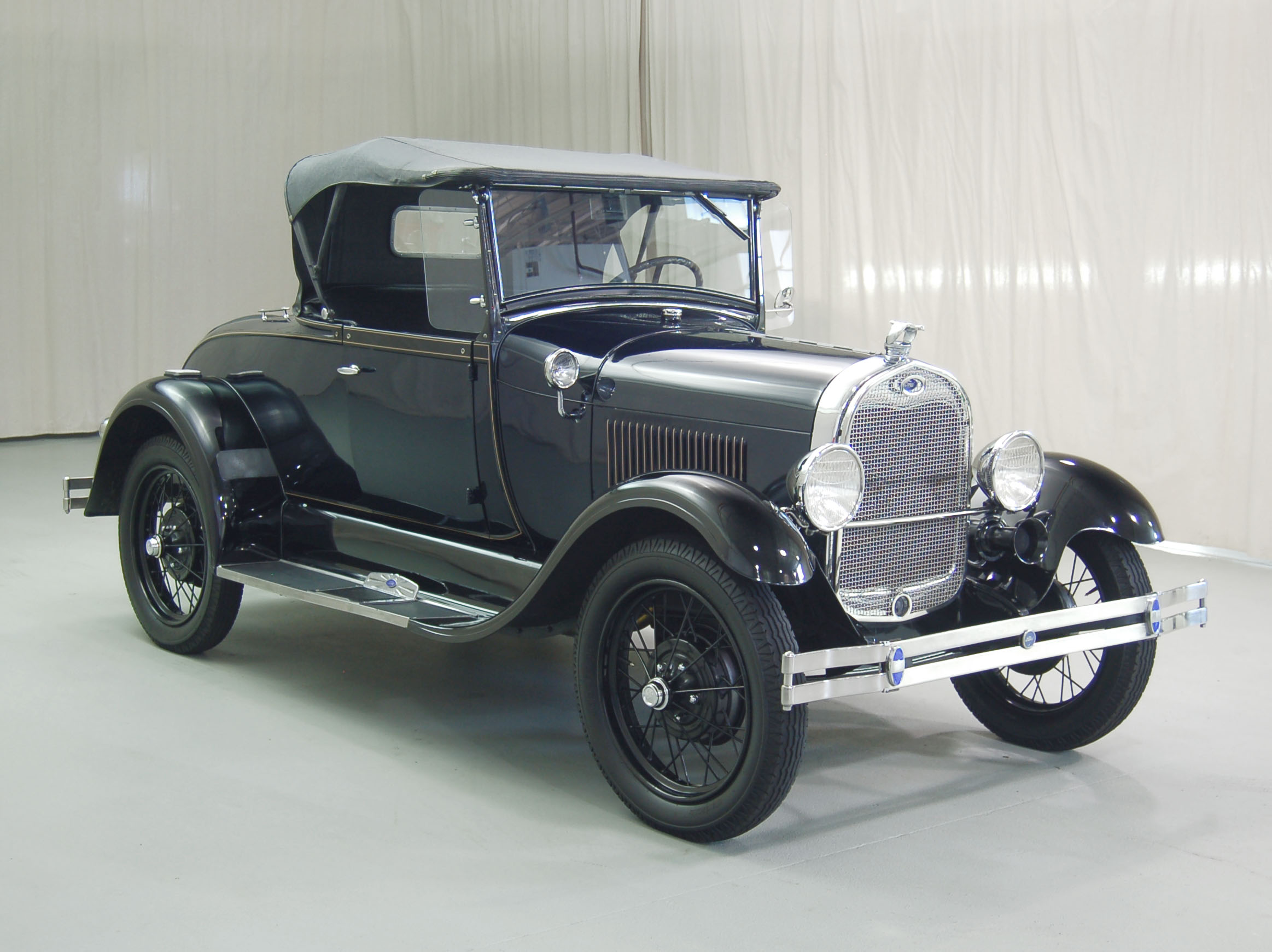Enter Here: Five Entry-Level Cars from Five Decades
If Henry Ford were alive today, he might find the $14,000 Ford Fiesta a bit too luxurious for his tastes. What’s this – brakes on each wheel? Heat? Safety systems? Such extravagances! No, the old man liked to keep things simple in a car “for the great multitude.”
Since then, carmakers have wrestled with costs and competition to attract “entry-level” customers. Along the way they’ve produced a multitude of models, some of which stand out for design, innovation or just plain weirdness. Each of the five on this list offers a snapshot of American society.
Ford Model A, 1928
As Henry Ford’s long-held opposition to replacing the hopelessly archaic Model T drove more and more buyers to Chevrolet, his people – including his own son, Edsel – finally persuaded him to finally replace it with the far more modern Model A for 1928.
A safety glass windshield, four-wheel brakes and a water pump for the engine were among the new car’s numerous advances over the T. Conventional floor pedals and a shifter for the 3-speed manual transmission, along with up to nine body-style and many trim choices brought Ford into the modern car age. Prices starting under $500 helped sales reach nearly 5 million in the Model A’s four years of production. Its success certainly taught old Henry a lesson about low-priced cars: the 1932 replacement model debuted a V-8.
Crosley, 1939 and 1946
How more “entry level” could you get than a car marketed for $300 in an appliance store? Powell Crosley, Jr. figured shoppers might like to pick up a car while buying one of his refrigerators. His tiny automobile, introduced in 1939 with a 12-hp 2-cylinder engine, looked like a giant kiddie car.
The post-war version looked a bit more like a real car, but in two-thirds scale. It was just 12 feet long and weighed 1,200 pounds. There was innovation here, including the single overhead-cam four-cylinder engine built from sheetmetal rather than castings (though a conventional cast iron block came later). The 44 cubic-inch engine monster made a tire-ripping 26.5 horsepower.
The tiny-car concept was intriguing, but at $900 the Crosley was just $200 less than the cheapest Chevy. The Chevy, though, gave you 1,800 pounds more car. After just 75,000 were built through 1952, the Crosley disappeared. Americans liked tiny prices, but not tiny cars.
Kaiser-Frazer was a new postwar marque in 1947, with a focus on big, well-appointed cars. Industrialist Henry J. Kaiser then got the urge to go after the “basic transportation” market with a compact named for him, the Henry J. Just 175 inches long on a 100-inch wheelbase and with a choice of four-cylinder or six-cylinder Willys engines, the bulbous Henry J should have been the kind of car to head off the burgeoning Volkswagen Beetle invasion. Indeed, things looked bright the first year, with some 81,000 sold.
But sales plummeted to 23,000 the second year and 17,500 the third. The public found the Henry J was too small and too stark for its $1,300-$1,500 price. Early models didn’t even have an opening trunk lid. The Henry J was also marketed as the Allstate by some Sears stores in 1952 and 1953, but sales were only in the hundreds. The Henry J disappeared after a brief run of cars tagged as 1954s.
Just as AMC’s nearly 10-year old Rambler crested 90,000 annual sales in 1959, the Big Three released their first compacts that fall: Chevy Corvair, Ford Falcon and Chrysler’s Valiant (which was sold by Plymouth but not branded as such until 1961). With nearly 200,000 sold, the 1960 Valiant was a hit with its $2,033 base price, unibody construction, roomy cabin seven-dip rustproofing, 12-volt electrics and new 101 hp 170-cu. in. “Slant Six” engine. A station wagon model offered a third-row seat.
Chrysler’s torsion-bar front suspension gave the Valiant solid handling, and there was even a performance upgrade, the Hyper Pack with 4-barrel carb and 148 hp. The V-200 upgrade trim was the biggest seller, accounting for three quarters of sales. A Dodge Lancer companion model arrived for 1962.
Perhaps most significant about the Valiant is that the basic platform continued until 1976 and underpinned a string of successful models, including the Dodge Dart and Demon and Plymouth Barracuda and Duster. The platform was robust enough to spawn several junior V8 muscle cars, too.
Another decade brought another wave of American entry-level cars, and this time, AMC beat Ford and Chevy to market with a subcompact — the utterly unique Gremlin. The Gremlin demonstrated the underdog company’s ability to slice and dice its platforms and parts to create something new. To make the Gremlin, AMC chopped a foot from the compact Hornet model’s 108-inch wheelbase and 20 inches form its length.
The Gremlin used the Hornet’s front structure, but the wedge-of-cheese rear design was unique. A base model had just two seats. Unique for the class was a standard six-cylinder engine, and in 1972, an optional 304 V8 made the Gremlin a 2,800-pound hotrod.
A sporty Gremlin X package was popular, and perhaps most interesting was the Levi’s package that debuted for 1973. Spun nylon upholstery stood in for cotton denim blue jeans fabric. A standard VW/Audi 4-cylinder engine arrived for 1977, but for 1979, a more conventional-looking restyle turned the Gremlin into the Spirit.


